Articles
| Name | Author | |
|---|---|---|
| Column: Pithy Bites | Paul Saunders, Global Product Manager, Flatirons Solutions | View article |
| EFB Together we can do more. Orgainizational Strategy White Paper | Philip J. Benedict, Customer Strategy Development, Closed Loop | View article |
| A Giant Step Into the Future – Aeroflot OCC and HCC IT Upgrade Case Study | Gesine Varfis, Advisor to the COO, Aeroflot | View article |
EFB Together we can do more. Orgainizational Strategy White Paper
Author: Philip J. Benedict, Customer Strategy Development, Closed Loop
SubscribeEFB Together we can do more. Orgainizational Strategy White Paper
EFB that supports an organizational strategy for operational improvement is, says Phil Benedict, Customer Strategy Development at Closed Loop Consulting, the best way to proceed
Get the vision
Up until now, EFB and e-enablement have been driven by technology and technology providers. To be fair, they have great solutions and equipment that we can use but no longer are we in the days of A or B: Honeywell or Rockwell. There are many more options available from which to choose, but the flip side of that coin is that it will be a lot more complicated to keep projects moving without a good organizational strategy. For airlines to realize a step change in the business, they’ve got to start to think for themselves, to develop ideas for business process improvements (BPIs). They have to develop a strategic vision and then seek from all that’s available the technology appropriate to delivering that vision. Plus, they must be able to keep the suppliers aligned to support the airline’s vision, whatever that might entail.
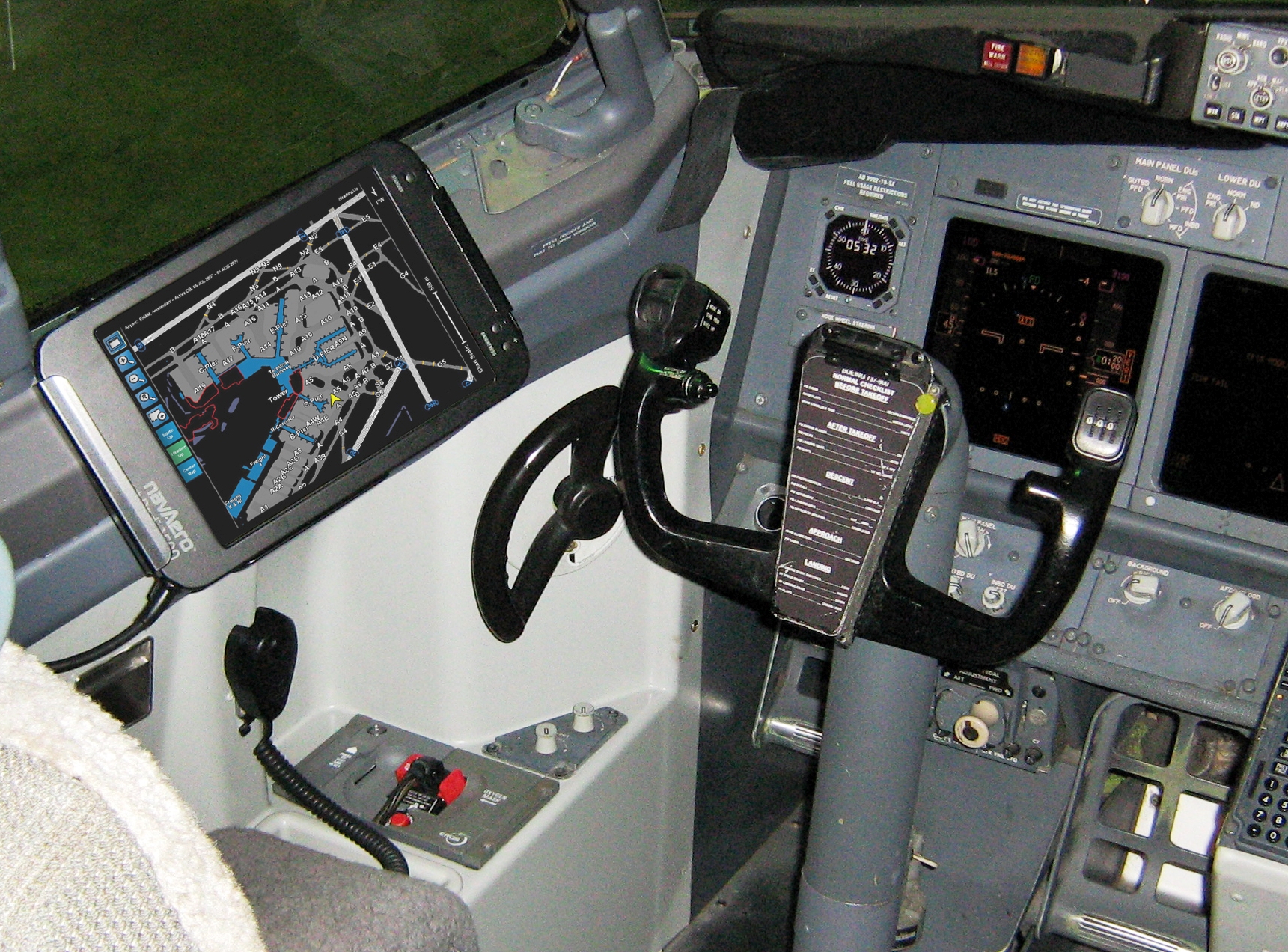
We might well come up with great ideas but it will be better if they’re vetted by the whole organization so that an organizational strategy can be developed and executed to bring about the step change that people in airlines have been asking for: it’s also necessary if we are to ensure a successful project. However, whatever you do, don’t automate the status quo. Don’t simply speed up the processes and practices used today or replicate digitally documents whose utility might have been limited by their paper format. Your strategic vision will enable you to take full advantage of the capabilities of a digital solution.
Make the (whole) business case
A facilitated strategy event that will provide for those business process improvement ideas and the business case to support them (as well as a successful project) is really essential; not only for the business case development but also for the wider project. Furthermore, a business case is needed to clarify the expectations of the project. Where are we and where are we going: what will be the cost and what is the expected return on investment (ROI)? A project without a strategy is like the noise before defeat: it’s like putting the cart before the horse.
Publishers and users of information
I like to think about the whole subject in this way. The aircraft is a publisher of data, and there are several subscribers to that information on the ground. On the ground it’s just the same; the back office, the OEMs, the airline infrastructure, they all publish data, and the aircraft and crews are subscribers to that information. So we have ask ourselves whether there’s a better way to manage all this data and turn it into valuable information that we can use; getting it to the right people at the right time. Are there BPIs that will help us be more efficient and more effective in the utilization of that information?
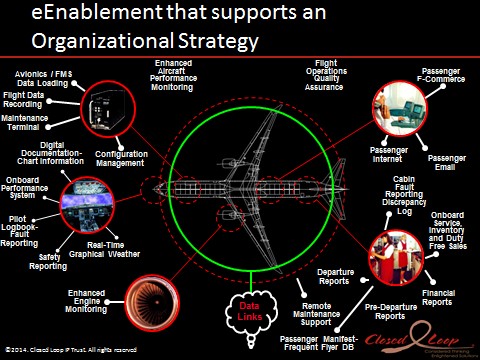
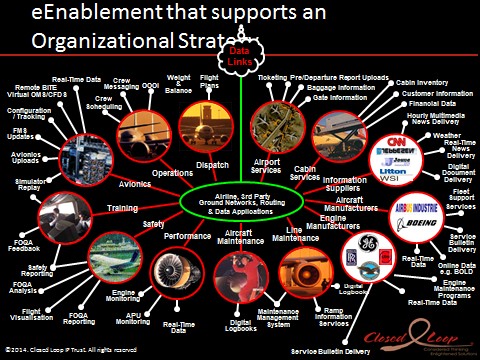
All of those circles in the diagram represent silos in the organization which certainly exist. Indeed, it seems that the bigger the organization, the thicker their walls and the taller the silos become. This is the way most airlines operate, have been doing for years and still do today. And the more they grow the thicker these silo walls become. It’s because of that, that airlines typically buy solutions within domains, within those silos, and don’t tell anybody else in the organization.

Figure 3
We need to ask: will there be a business case if we only develop an EFB strategy for the aircraft or would the business case get more traction if it was a holistic organizational strategy instead? So, ask yourself, what is the vision of your airline and what strategic objectives have you formulated to accomplish that vision for the whole airline? Now you can ask, where does the EFB fit within that Vision?
Yes, we can do it but for what purpose?
I was fortunate during the 1990s to know Captain Elrey B Jeppesen, one of the most famous men in and contributors to aviation history. On one occasion, I asked him if he would like to see one of his charts on an electronic display. He didn’t understand what I was saying. So I put two charts on my display: one was a scanned image of a current paper chart, the other was our first rendition of an electronic chart. I showed him the scanned image of a current chart and he said “well look at that, she looks good on a display as well.” I didn’t have the heart to show him the new chart but it showed that we had the means to supply electronic charts.
What we didn’t have was a clear strategy of what airlines wanted, or how we would provide it. But we were lucky, because the airlines didn’t have one either. They just wanted charts on a display because they felt that surely they would be cheaper. There was no strategy, but rather a technology looking for a problem to solve. Instead, it created several problems for which there was no clear strategy for addressing how to deal with them. There was the challenge of distributing electronic media and information and the fact that, for electronic documents there were too many standards that took too long to develop. Likewise, there were no aircraft standards for hardware to utilize electronic data. The business case for (electronic library systems) ELS/EFB deployment was difficult; after all, if the charts cost the same on paper as they do on a display, where’s the business case? The result was a reactive environment in which everyone was anxious to put a terminal, a display, a laptop on board but did not really have a strong business case to do so. There was a lot more to think about.
Today, a lot has changed; technology (hardware and software) has progressed considerably while standards have been adopted and gone away again to make way for different standards to be adopted. The personnel in airlines and operators are so much smarter these days about what is available and what could be done; and the aircraft are just so much more data rich now than they were back in the eighties and early nineties. The cost has reduced but the risk has remained the same for EFB projects; there still needs to be a cost versus risk analysis.
But some things have not changed. There are still failures of many EFB projects in our industry where business processes have not been clearly defined as against automating the status quo. There remains a lack of organizational strategy to support technology deployment.
Measured success
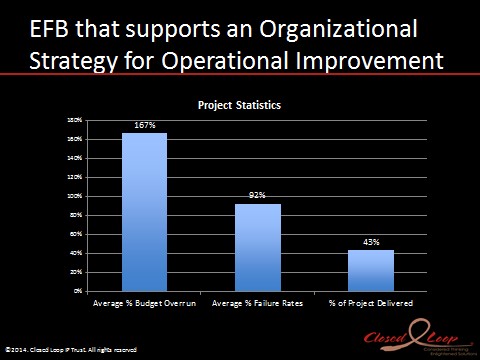
Figure 4
All working together for the whole business
Once you have a successful implementation or while you’re getting that going, think about the ‘hangers on’ or the people who might want to impede the project from other departments. Rather than have that happening during the middle of the process or right at the end, why not include them in at the beginning?
If technology is to help us be more efficient and support BPIs, then we must believe in a requirements-driven philosophy and a systems approach to our projects. We have to look at the big picture but we don’t need to implement that entire big picture at once: we can take baby steps, steps that allow us to have an ROI so that we can go on to the next step. Just make sure all of those steps are pointing in the right direction and that you’re not going to be surprised at the end.
At the end of the day, the process must reveal a ‘Concept of Operations’ (ConOps); being able to clarify how it is done today, what you want it to be like in five years and what you want it to be like at the end of this project so that you have the basis from which to perform a business case analysis. This approach directs the focus away from the software, hardware or particular suppliers and towards the real requirements for the business such as sustainable business process improvements and lower costs.
The result is a zero based audit, an open thinking process that ignores current business practices and considers a Greenfield environment; wiping the slate clean. We need to ask what could happen in an optimized state where content management and data flows get to the right people at the right time. In this scenario, a positive vision is created of how the business can evolve into an optimized state, with content management and data flows producing timely and accurate information and where duplication is eliminated… a truly e-enabled environment.
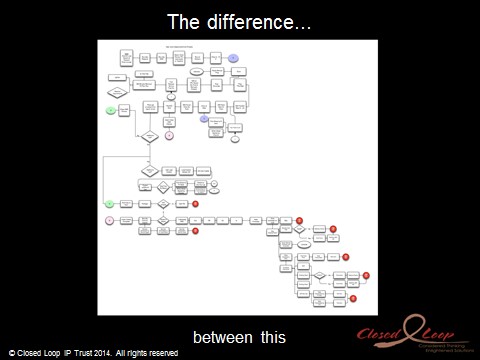
Figure 5
… and this (figure 6).
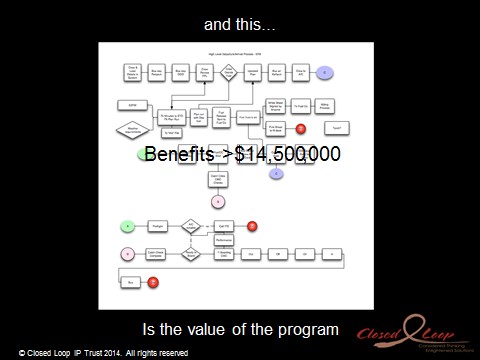
Figure 6
A business case is created that looks at the organization as a whole to eliminate silo focused technology adoption (because there are lots of the ‘silo’ groups in the room, if not all of them) but retains the cost reduction potential of e-enablement technology adoption. So rather than each group buying a content management system or each group taking care of their technology needs separately, they all agree on a common solution. If we want to share information and data across the organization, then we need to have this kind of an approach.
How to do it
This all may seem an excellent way to proceed but you might reasonably ask, how can we do it? Let’s think about an approach to developing strategic objectives. The first thing we need is to have a Strategic Vision Setting to establish where we’re going and a road map of the route to follow. A SWOT (strengths, weaknesses, opportunities and threats) analysis can be of use to get things started. Performing a SWOT analysis about what are we good at and what we aren’t good at, as well as what gaps we need to fill in the context of the strategic vision, will help develop strategic objectives. These Objectives coupled with a ConOps will develop a road map for how to improve the current business: improving the ‘what is’, balanced with what needs to be done to create the ‘what will be’ or the strategic vision.
A holistic strategy and an execution plan are like insurance for the project. How many CFOs would like some assurance about this next project actually coming to fruition? Isn’t it worth spending the time (perhaps two or three months at the beginning of this project) and effort up front to develop the right strategy to help ensure the success of your technology projects and expenditures? This will help in understanding what you want and what you need from a requirements driven approach, before you start spending money and allocating resources on projects like this. Rather than adopting technology that does it ‘their way’, we should be adopting technology that helps us to be more efficient and gives us the tools to help us realize our (BPIs) and our strategic vision. The mantra has to be, ‘adopt the right technology that brings about step change for your airline, not technology that simply automates the status quo.’
Summary
To achieve a step change, you need to settle your strategy and understand whether it’s just for a single department, or for the whole airline. You need to develop internal partnerships to eliminate silo focused effort and expenditures, and to drive towards successful EFB and e-enablement projects.
You’ll need to have a facilitated strategic event to develop your holistic organizational vision and strategic objectives. This shouldn’t be done by the supplier because then what do you think your strategy’s going to be? And it shouldn’t be done by yourselves because you need to participate and this process needs to be taken seriously. And there has to be a champion at the very highest levels of the organization to ensure attendance, to ensure effort going forward.
Have a ConOps developed to understand the gap between ‘what is’ and the ‘what will be’ of your vision as well as the BPIs implicit in that organizational vision. Don’t let things surprise you; understand what that big picture looks like today and then what it going to take to get to that vision and the BPIs that are going to help fund the project.
Adopt a business case that includes the whole of the airline, or as much as is feasible, and can be easily measured and tracked. Get more people who are accountable, and get more people who are stakeholders in this project, who can utilize the technology and who are part of that e-enablement philosophy within your airline.
Develop an RFP (request for proposal) for your EFB project which is requirements based, is supported by an organizational business case, and fills in the gaps identified by your ConOps and SWOT analysis. Finally, monitor the effects of implementation against that business case to support this and future projects. Build credibility in the organization because ‘we did what we said we were going to do, and it cost us what we said it was going to cost and it is paying us returns like we said it was going to do.’
Make your EFB project part of a value building program for the whole airline.

Comments (0)
There are currently no comments about this article.


To post a comment, please login or subscribe.